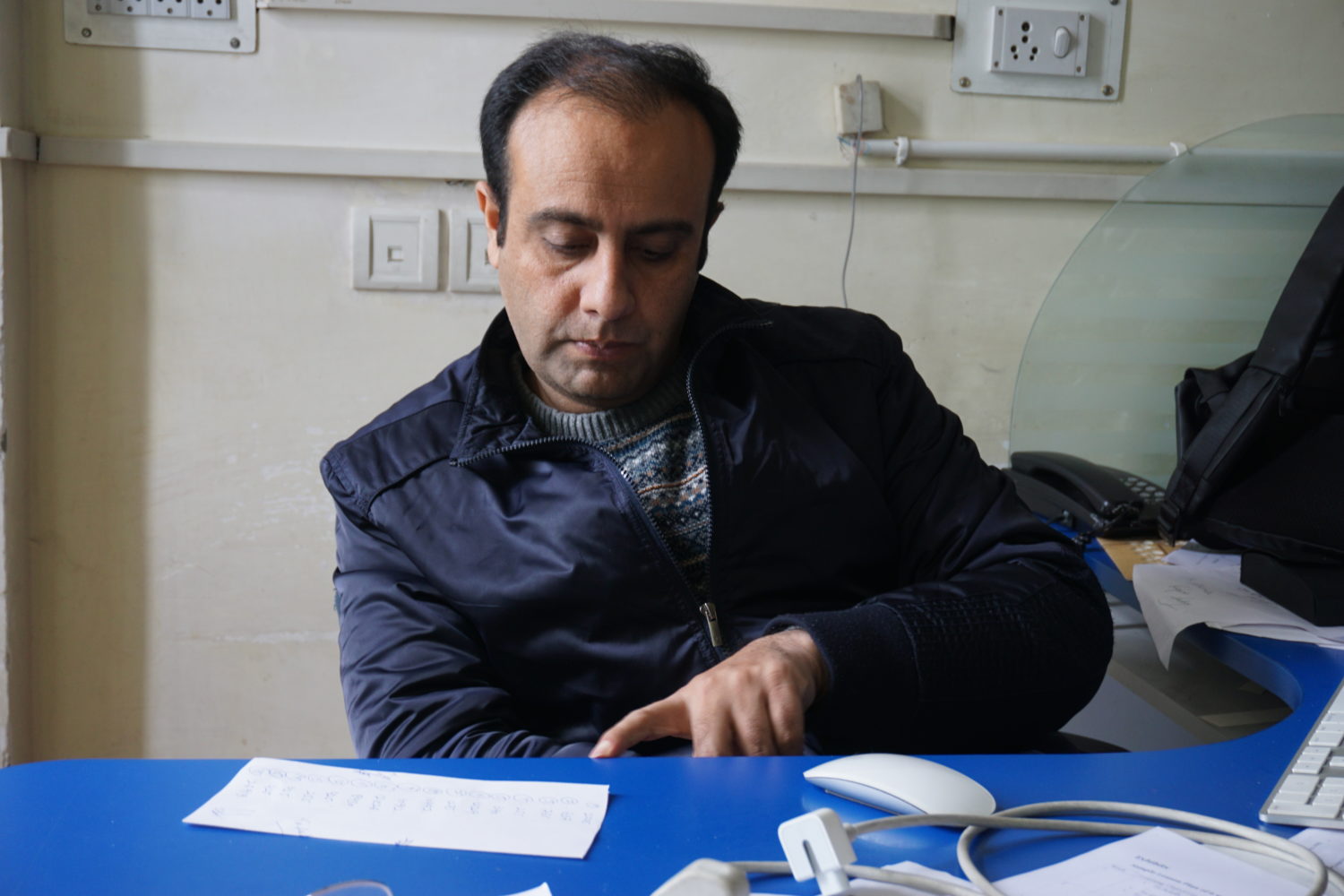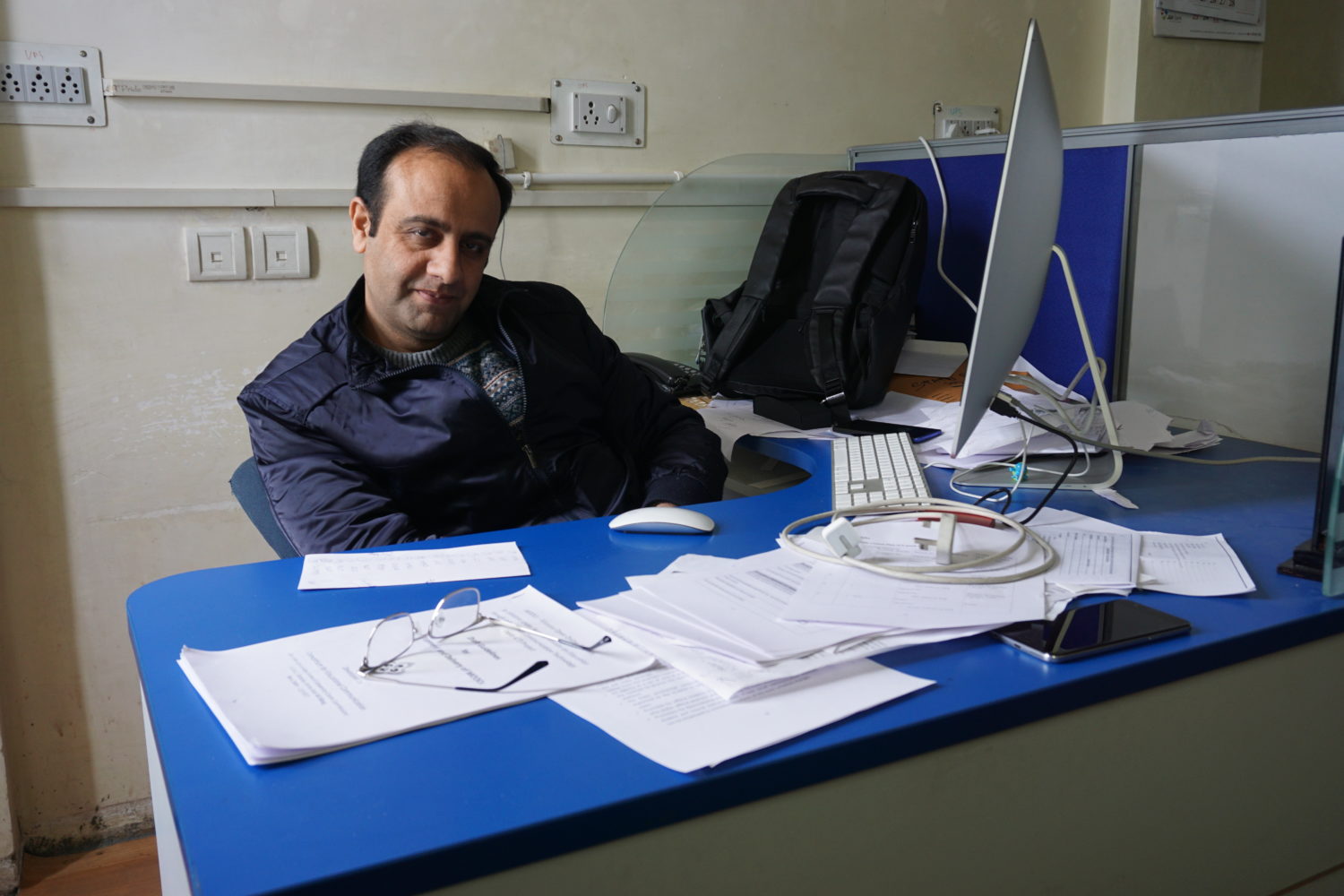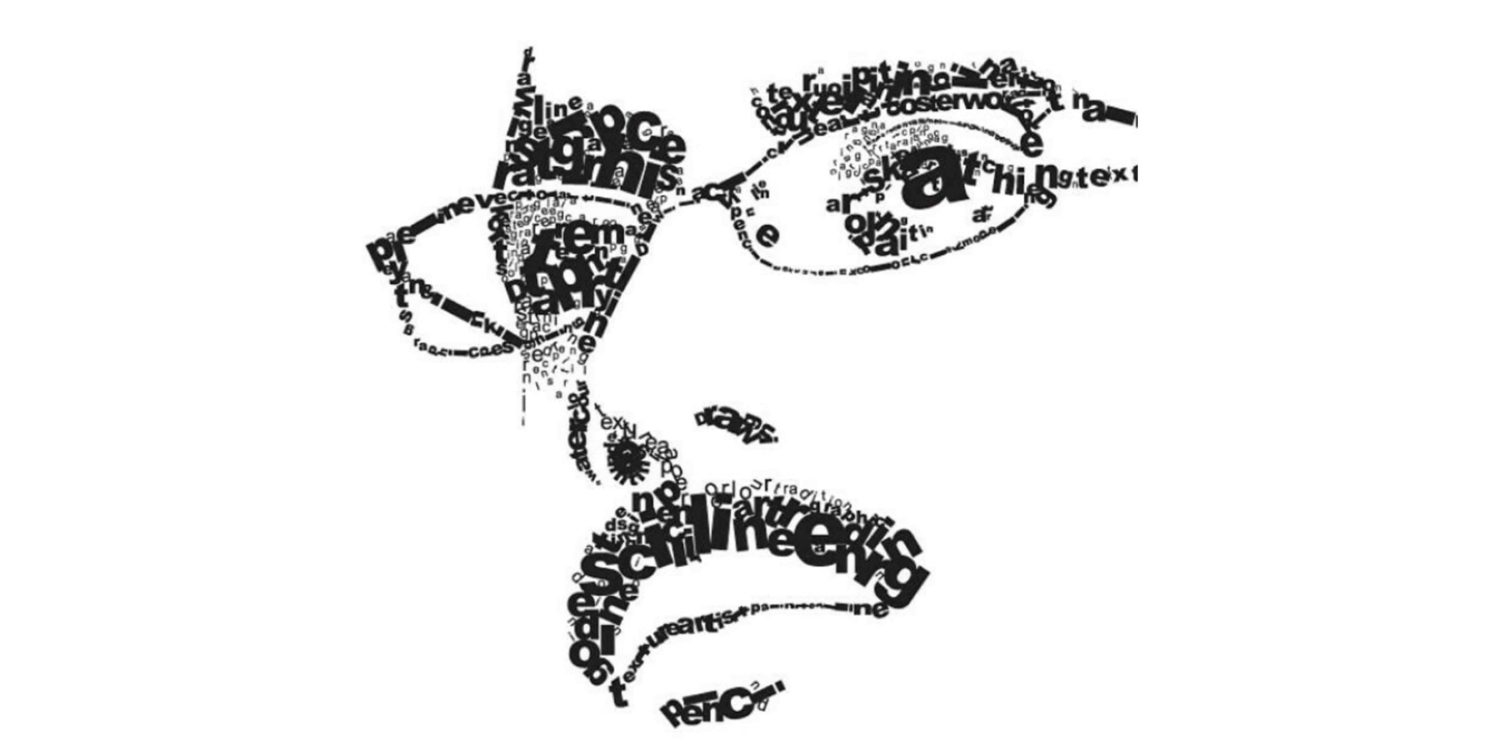A maverick Kashmiri designer’s sudden demise due to a cardiac arrest on Sunday (October 10, 2021) created tearful tributes and left a shimmering creative legacy behind.
Funeral-goers crowded the crammed alleys of Habba Kadal, Srinagar where Akhter Rasool’s primary art schooling began back in eventful eighties.
On his hometown alleys now painted with some defaced graffitis, the fresh-faced Akhter would come out with a charcoal in his hand.
With time, that charcoal got replaced with some finest art tools, but the passion remained the same, eventually making the street boy as the ace graphic designer of Kashmir.
To fathom the depth and detail of his art, I traversed lanes of Babapora, Akhter’s neighbourhood that rose up in flames a decade back. In that fire, the artist lost what he called a treasure trove. Post-blaze, he had to make a new beginning.
We met a winter before Delhi downgraded the erstwhile state of Jammu and Kashmir into a union territory.
Akhter was dressed modish — a blue blazer stood out in the room full of his creative art. But while he was buoying with his art, his bygone bustle-bereft hometown outside wore a weathered look. A mix of new and old shelters had created some ugly confluence. The designer in him was quite aware about his neighbourhood design violations.
That good old aesthetics we talked that day was being buried under the construction boom.
Akhter had an oriental grace in him and looked as genial as his friend circle always knew him. The genius was living his art—rather breathing every moment of it. And there was a reason why he was first among the equals. Even in his sleep, he told me, he was dreaming about the art. “So does that devotion make one art itself?” I casually asked.
He took his time to reply and once he did, he made it curt, “An artist is an art in itself.”
Beyond that engaging conversation, Akhter Rasool’s world was an intriguing portrait with innovative touches. He was already a cult in the community known for producing some finest artists of repute.
When young Akhter came out of the shadows of his strife-stricken nighbourhood — where the lament over the departure of Kashmiri brethren is quite discernible — he didn’t take much time to create a niche for himself. His artistic expression would be polished by his Fine Arts degree from the University of Kashmir—the campus he loved and where he ended up as reckoning staffer.
His evolved art raised the bar of the graphic designing in Srinagar. He helped newsrooms and advertising agencies to make the creative treatment germane to times. “His hunger for learning and incorporating new techniques and technologies set him apart,” says Mohsin Reza, his apprentice.
Among his contributions is his unassuming mentorship which grew the tribe of graphic designers in Srinagar. “He was our go-to ustad whenever we would face any creative hitch,” Reza says. “He always supported the innovative ideas and designs.”

That day when I met Akhter in his studio, he came across as a silent servant of art. He defied the cult image he had come to adorn with his affability. “There’s something about artist,” he told me, “which makes him an ally of his people. And that’s the sense of responsibility.”
And Akhter demonstrated that sense beautifully, especially when it came to guide aspiring artists of Kashmir. “I see a ray of hope in our growing tribe,” he said. “Some of them are truly amazing. I watch their work, guide them in my little capacity, and feel glad over our expressive art.”
Just like any creative genius, he was going back to the times when his affair with the art began. In his boyhood, as AK-47s became new street symbols, Akhter astutely noted the transition in his homeland. There was a chaos, he said, but he had to find his call. With conflict mill churning daily obituaries, he saw the creative enterprise of the valley taking a backseat. During those tumultuous times, he chose to be realistic and worked hard on his artistic abilities.
“We haven’t been able to produce a single powerful art work that could be presented as a remembrance of our uprisings,” Akhtar steered the conversation towards his homeland lament.
He would voice that lament with his dirges in the memory of the martyrs of Karbala. “It’s all about being soulful about things,” he spoke with a strange sentimentality that day. “It’s with this feeling that art eventually immortalizes the public movements.”
As a no-nonsense artist, Akhter would come across as a Spartan critic at times, especially to the aspiring artists. Behind his tough stance, he told me, was his resolve to push artists on the path of glory. “Just like one swallow doesn’t make a summer, likewise a countable artistic feat cannot make one an artist. It’s all about grit and grind at the end of the day.”
Akhter also made no bones about the artist community’s “failure to visualize the reality of Kashmir”.
Kashmiri artists, he believed, are still more influenced by the artworks of the Palestine or the West while elements in their own society remain untouched.
“It reflects clearly when we look at the works of our artists where most of times there is sound presence of symbolism and lack of local elements,” he told me.
“One of the reasons for this failure could be the kind of restricted space within which we work or simply because we haven’t evolved enough to identify and use the elements in our surroundings that are used as tools by any artist worldwide.”
When the buck stopped at him, he smiled and said, “I’m only drawing the elements I’m surrounded with since my childhood.”

Back in the day when the same art surfaced on Habba Kadal’s street walls, he was supported by his family and friends. Later, as a token of gratitude, he would gift a Hindu idol drawing to his Pandit teacher. It was the first serious work that he remembered as a child. “She [his teacher] was totally overwhelmed when I presented that painting to her,” Akhtar recalled.
Seeing his art inclination, a respected resident of his neighbourhood named Ali Malik suggested him to excel in the field of fine arts.
“Soon I joined for the bachelors program after passing an aptitude test in the Fine Arts Department of Kashmir University where I had an introduction of the field for the first couple of years,” he said.
In those two years he went through the introductory part of almost everything that included painting, sculpture and the applied art as well.
“Through the traditional medium I had an introduction of the very roots of this field that played a sound role to shaping my imagination as an artist,” said Akhtar.
He went for the specialization in the applied arts and through which he believed an introduction of the universal language was made to him. His patience and urge to work on the details gave him an edge in the field of applied arts.
“Patience to work on the details proved in my favour when I opted to go for applied arts and then further in the commercial art as well,” he said.
This was the time when Akhter realized that if the art is not groomed in accordance with the transition in the contemporary art field, an artist would be easily left behind.
“By that time I had completed my bachelors, I saw that the digital medium is rapidly becoming a tool and is soon going to overtake everything,” he remembered.
It was in Delhi where Akhter saw all these new innovation nestling on the artistic tables. In that creative environment, he groomed to be a graphic designer.

Akhter didn’t limit himself and his art to some particular field. Starting his artistic journey in the field of journalism, he first started as a cartoonist for Al-Safa, a Srinagar-based Urdu daily, before joining Greater Kashmir where he received an overwhelming support from the editor and the whole team.
“With a fresh idea of the layout, I was trusted and given my space to try new innovation with the traditional form,” recalled Akhter who worked for GK Plus, Kashmir Uzma, among others.
From newsrooms, he would eventually make reentry into the campus when he joined Kashmir University as junior graphic designer.
“The transition to switch from the traditional medium to digital medium proved to be a game changer in my life,” he told me. “Though I was in applied arts, but the illustrations would always leave me with that space to express what was absorbed inside me of the things happening around me.”
During that fleeting creative journey, Akhter Rasool left behind many moments and memories — now making many nostalgic about Kashmir’s ace designer, whose street rise was as stirring as his art itself.
Free Press Kashmir is now on Telegram. Click here to Join.
FPK Android App for 2G. Click here to Download.








